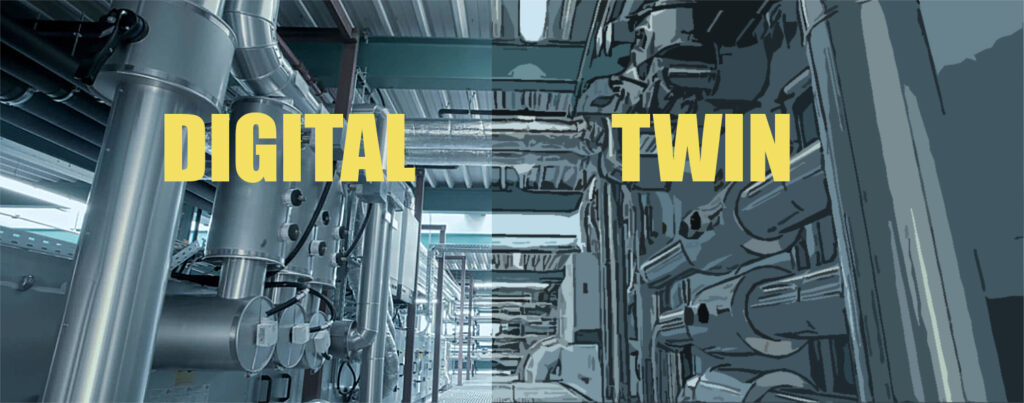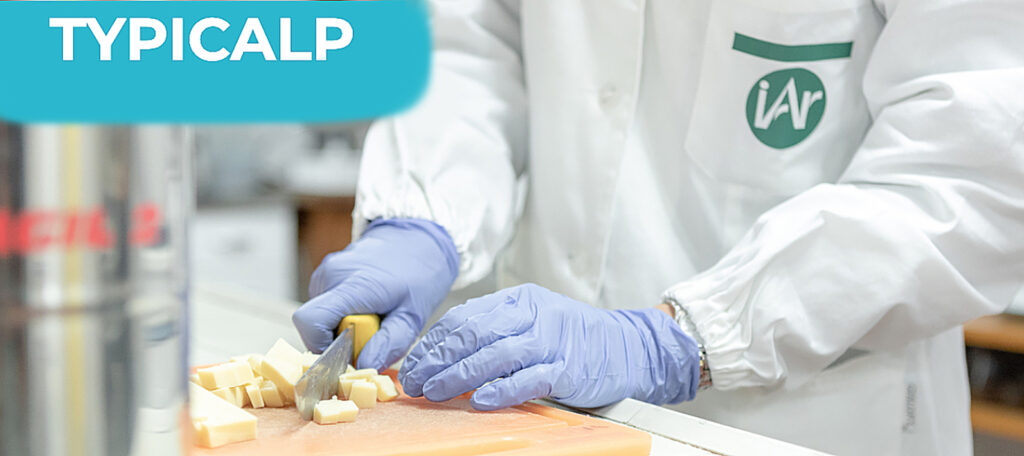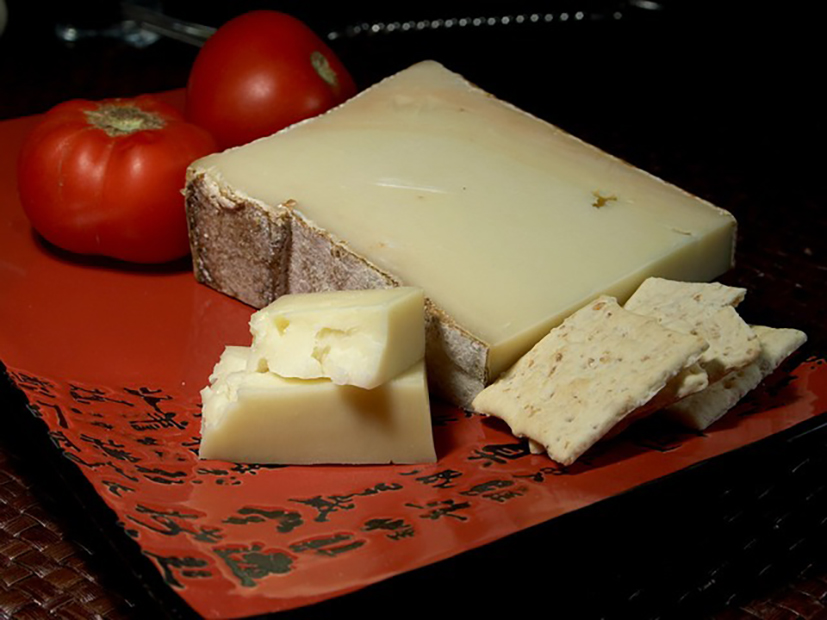
The digital copy of a real object and the technologies used to implement it can provide advantages in refrigeration, too. An Italian-Swiss project relies on the digital twin to enhance and to protect dairy products.
It is called digital twin, and it is the digital copy of a physical object that allows simulating its behaviour and storing numerous information about it in a secure environment.
Next years it will become crucial in many manufacturing and industrial contexts, playing a key role in the digital transformation process, even becoming one of its enablers. Market&Markets expects that the global market value of the digital twin will rise from 3,8 billion dollars in 2019 to 35.8 billions in 2025, with CAGR by 37.8%. Gartner foresees that within 2022 over two thirds of the companies that implement IoT will make use of one or more digital twins in their production systems.
The refrigeration world as well will enjoy, directly or indirectly, the benefits deriving from the adoption of this technological solution. A concrete example, concerning the food industry – and more specifically dairy products, for which the conservation temperature is extremely important – is studied in the ambit of the project between Italy and Switzerland dedicated to the preservation and development of typical products. The project is called Typicalp, and it combines the secular knowledge with the most advanced technological innovation, proposing a solution that harmonizes emerging concepts such as digital twin and blockchain.
Digital twin: what it is and when it was born
 The concept of digital twin is relatively recent. The term was used for the first time in 2002 by researchers of Michigan University, in the context of the observation and management of a product lifecycle.
The concept of digital twin is relatively recent. The term was used for the first time in 2002 by researchers of Michigan University, in the context of the observation and management of a product lifecycle.
Concretely, the digital twin is a digital replication of a physical entity: an object, a complex machine, a manufacturing plant or even an entire city. Its main function is collecting and filing data coming from the physical item to which it refers, with which it is always in communication. Starting from this information, it is possible to understand the condition of the good, to simulate specific situations, to monitor its operation and in some cases to influence its behaviour. It is a virtual alter ego, a “bridge” between the physical and digital world, useful to connect objects and systems in net, collecting information from them (and sending to them).
NASA first experimented its potentialities, since the dawn of the space exploration, even before it was identified and theorized.
The aerospace sector, the automotive, the manufacturing and the transport industry have already started benefitting from the digital twin, but there is no sector where it is impossible to use this concept, providing extraordinary advantages.
Digital twin for refrigeration
What are the benefits for the refrigeration world deriving from the adoption of the digital twin? «One of the primary, connected with the so-called cold chain, concerns the possibility  of assessing with precision the compliance with the correct temperature thresholds in the transport of perishable food products», explains Edoardo Calia, vice-director of Links Foundation (Leading Innovation and Knowledge for Society). «In such specific context, it is possible to design and to implement the digital twin of a batch, or even of a single product. The data the digital twin can store include also the trend of the temperature to which the batch, or the single product, is exposed». To obtain this result, the good of interest must be equipped with a device able to measure the temperature and to communicate the corresponding datum to the digital twin, which in the most general case is in net, on a system managed in cloud. The resulting system is a specific case of Internet of Things, a scenario where one or more sensors punctually monitor the information of interest, collecting data and registering them locally or – more frequently – sending them online.
of assessing with precision the compliance with the correct temperature thresholds in the transport of perishable food products», explains Edoardo Calia, vice-director of Links Foundation (Leading Innovation and Knowledge for Society). «In such specific context, it is possible to design and to implement the digital twin of a batch, or even of a single product. The data the digital twin can store include also the trend of the temperature to which the batch, or the single product, is exposed». To obtain this result, the good of interest must be equipped with a device able to measure the temperature and to communicate the corresponding datum to the digital twin, which in the most general case is in net, on a system managed in cloud. The resulting system is a specific case of Internet of Things, a scenario where one or more sensors punctually monitor the information of interest, collecting data and registering them locally or – more frequently – sending them online.
In the case of perishable good logistics, a temperature sensor could collect data with continuity during the transport and transfer them (in real time or at the travel end) to the digital twin of the transported good. Whoever is authorized, can successively query the digital twin and check whether the optimal thermal conditions were respected.
«All chain players – from the producer to the consumer, from the small shop to BOD – can take advantage of the availability of information about the “story” of the product, having for instance a certified quality guarantee of the product», the vice-director of Links Foundation specifies. Stemmed from “Compagnia di San Paolo” and from Turin Polytechnics, the Turin Foundation operates on a domestic and international scale in the ambit of the applied research in the sector of innovation based on information technologies.
Typicalp Italo-Swiss project
Typicalp project is co-funded by Interreg Italy -Switzerland Cooperation programme with a total budget of 1.63 million Euros (1.5 million Euros for the Italian part, and 740,000 Swiss Francs for the Helvetian part) and it is developed by a consortium of five partners: besides Links Foundation, l’Institut Agricole Régional IAR (Italian leader), Haute Ecole Spécialisée de Suisse Occidentale HES-SO Valais (Helvetian leader), and “Aosta Valley Chamber of Businesses and professions” and Autonomous Region of Valle d’Aosta.
Its target is protecting the typicalness of dairy products of the alpine tradition and biodiversity, increasing and strengthening the competitiveness of small-medium companies operating in the dairy product chain in the mountain areas of Valle d‘Aosta and of Swiss Valais. To succeed in it, it is necessary the implementation of a sustainable innovative cross-border model of communication and distribution, to boost mountain products and their by-products.
Links Foundation, in particular, will take care of improving the chain traceability of dairy products with the aid of digital technologies for the protection and the enhancement of products’ typicalness.
«The digital twin of each product is implemented and entrusted with the collection of information concerning the product’s history, starting from the milk provenience, the transport and processing modality up to the final product», Calia tells. «We can monitor the whole production chain, enabling the simple traceability of the product’s history starting from a single identification code. The collected information can be used to optimize the logistics and the management of transports, correctly sizing vehicles and reducing the number of travels, the fuel used and emissions. An aware sharing of information among the various partners of the chain, frequently still hindered by often unjustified fears and rivalries is actually the fundamental basis of what today is already called collaborative logistics».
Typicalp project aims at promoting, according to local companies’ requirements, the development and the implementation of modern systems of local logistics, using new telecommunication technologies (in the specific RFID/NFC and blockchain) and means with low environmental impact.
Started at the end of 2018, the project will be accomplished in December 2021.



